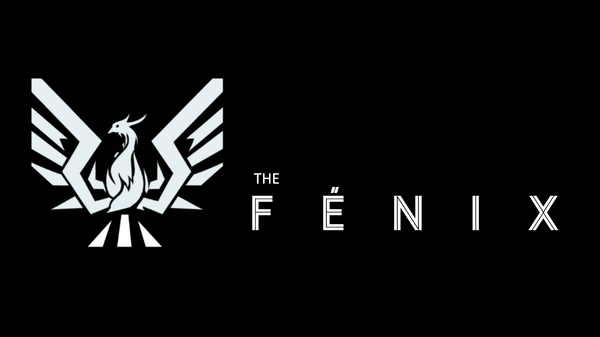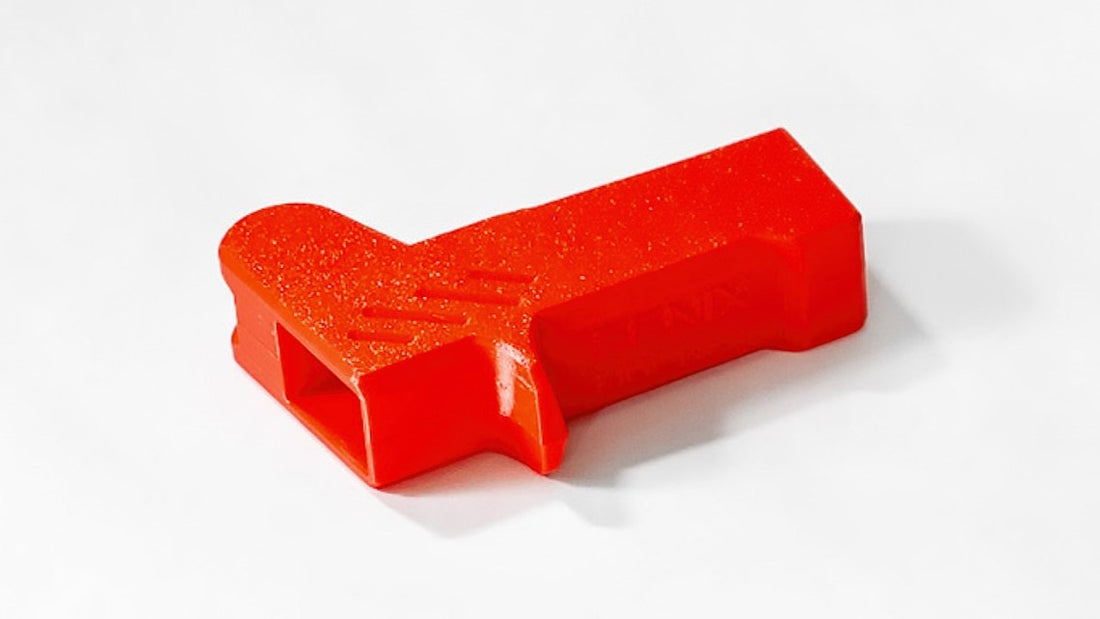What does gripping the stick correctly with the top hand allow a puckhandler to do?
FENIX Hockey has been busy. Since we launched "The FENIX" slip under device in 2023, we have been developing a range of puckhandling products that expand the functionality of the original or support puckhandling development in some way.
We recently opened our doors for the public to purchase some of these new products. Today the focus will be on our new product, "The Ridgeback".
The Ridgeback is an attachable (and easily removable) guide that gets the top hand into the proper position on the stick. One may ask, is proper top hand position a big deal?

Don't hold your stick like this with your top hand (if you can help it)!
For it to be a big deal, at least one of the following would need to be true.
- Proper top hand position is hard to achieve and, as such, a large proportion of the hockey playing public doesn't pick it up.
- Lack of proper top hand position is significantly limiting for a player
It turns out that both of these are true. And, on top of that, it is hard to fix. Lets dig into that along with the claim that many hockey players are playing hockey with a top hand position that is holding them back.
In the Competitive Edge Training Center (which essentially serves as the laboratory for FÉNIX Hockey), we spend a lot of time working on puckhandling and shooting. Top hand problems are an issue for both as I'll share below. In our experience, more than half the players we work with need to get their top hand right.
But, I can get more granular with my estimate. As players get older a couple things happen that help reduce the percentage of players that have top-hand issues. First, some of the players learn to correct their top hand position. Second, less successful players are more likely to drop out of hockey and these are also far more likely to be the players whose top hand position holds their puckhandling and shooting back. Despite this, I would still say that upwards of 30% of bantams need to correct their top hand position. Get down to the beginner levels and I think the figure is easily north of 70%.
So, in the training center, we spend a lot of time adjusting players' top hand positions. But these top hands are like garden gnomes, elves on shelves, and the Toys in Toy Story. As soon as you turn your head, they start moving around. Look back, and it turns out that the player has unconsciously regripped the stick back into a position that will hold them back as players.

How exactly does bad top hand position hold back a player's puckhandling?
First, puckhandling consists of puck movements of varying sizes. The smallest of these involves very little back and forth movement of the stick itself and can mostly be accomplished simply by rotating the stick in such a way that the heel of the stick moves furthest, comes over top of the puck, and touches it on the far side. This rotation is accomplished via "wrist roll" and it should be almost perfectly symmetrical on the forehand and backhand sides. Having the top hand rolled over to the top hand side (to the left for righties or to the right for lefties) of the knob breaks this symmetry and hurts wrist roll technique.
Second, having the top hand rolled over to its side of the knob tends to bring the elbow on that side out away from the body. That then tends to push the top hand up against the hip and the further tendency that results from this is that the top hand tends to stay "stuck" on that hip. This has two negative effects. First it places the onus on the bottom hand to do the bulk of the work. The bottom hand learns to carry the load and players wind up with a bottom-hand-dominant puckhandling technique commonly called "chopping salad" because the motion of the stick blade comes to resemble that of a chef's knife.

Might bottom hand dominant puckhandling technique be good for something?
The second negative effect is simply the elimination or mutation of many techniques that players should later learn that involve getting that top hand out away from the body.
The above video is queued up to show some demonstrations of issues that arise when holding the stick the wrong way with the top hand.
Bottom hand dominance is an issue in shooting as well. If the top hand is stuck on or close to the body, the bottom hand has to do almost all the work and it does so in a "shoveling" manner. This was never good, but with modern stick technology that allows players to really benefit from stick flex, it is an even bigger loss. And that technique issue affects passing as well.
Also, there are many puckhandling actions where we'd like to pull the puck back toward our body. On the backhand getting the hand off the hip is key to pulling the puck back toward our body. On the forehand, rotating the toe over and down allows for pulling the puck back in the direction of the feet using the toe of the blade. In that case, it isn't being stuck on the hip that is so limiting, but just having the top hand over on the side makes it so the stick blade can't easily rotate far enough to get the forehand toe of the blade down to the ice.
Click the above image to go to the Ridgeback product page.
The Ridgeback makes it uncomfortable to grip the stick with the top hand the wrong way. It has a fin on the bottom and a ridge on the top. Both interact with the spaces between your fingers (or finger and thumb) so that rolling the top hand to the side in the way that most young players do just feels wrong.
We designed the Ridgeback to create relief for those long suffering from this problem!
Eliminate the long-term limitations that most players face and put your skaters on a direct path to quality puckhandling with the Ridgeback!


